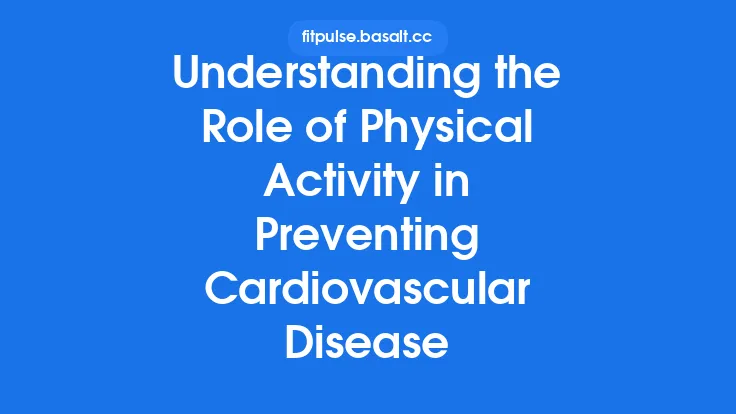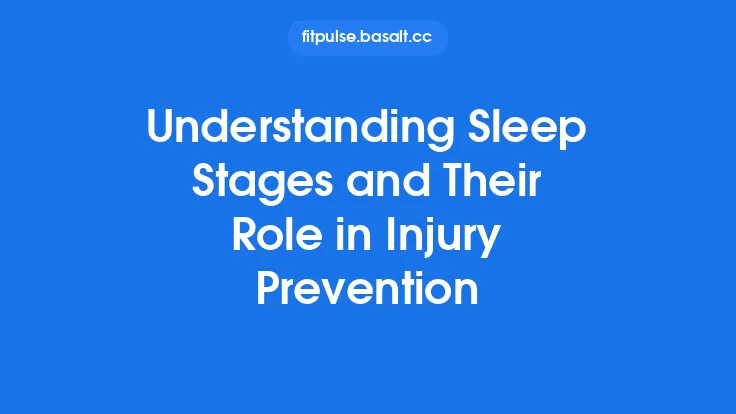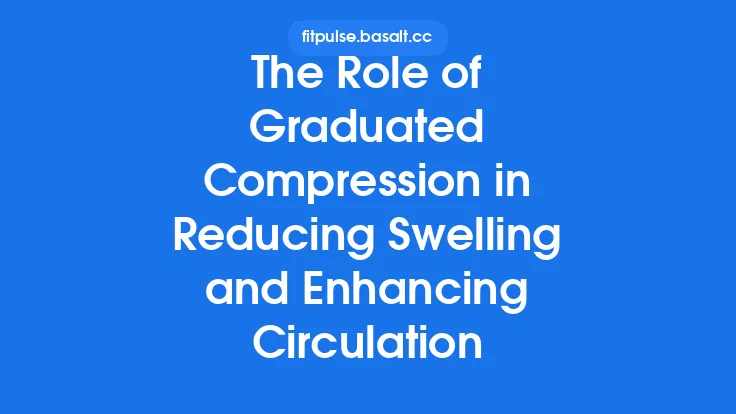Cardiovascular exercise—often simply called “cardio”—is a cornerstone of many fitness programs, yet its specific impact on blood pressure is sometimes overlooked. While the broader benefits of cardio for heart health, weight control, and stress reduction are well‑documented, understanding how aerobic activity directly influences arterial pressure can empower individuals and clinicians to harness exercise as a precise therapeutic tool for hypertension and pre‑hypertension. This article delves into the physiological pathways, acute and chronic responses, practical prescription guidelines, safety considerations, and evidence‑based strategies for integrating cardio into a comprehensive blood‑pressure‑management plan.
How Cardio Influences Blood Pressure: Physiological Mechanisms
- Vascular Endothelial Function
- Nitric Oxide (NO) Production: Repetitive shear stress from increased blood flow during aerobic activity stimulates endothelial nitric oxide synthase (eNOS), boosting NO release. NO is a potent vasodilator that reduces systemic vascular resistance (SVR), a primary determinant of arterial pressure.
- Reduced Endothelin‑1 Activity: Endothelin‑1 is a vasoconstrictive peptide; regular cardio down‑regulates its expression, further favoring vasodilation.
- Arterial Stiffness and Compliance
- Elastic Modulus Improvement: Long‑term aerobic training enhances the elastic properties of large arteries (e.g., the aorta) by promoting collagen remodeling and elastin preservation. Decreased arterial stiffness translates to lower pulse wave velocity, which correlates with reduced systolic blood pressure (SBP).
- Autonomic Nervous System Balance
- Enhanced Parasympathetic Tone: Cardio increases vagal activity, reflected in higher heart‑rate variability (HRV). A dominant parasympathetic state dampens sympathetic drive, curbing peripheral vasoconstriction and heart‑rate–mediated pressure spikes.
- Reduced Sympathetic Overactivity: Chronic aerobic training attenuates plasma norepinephrine levels and blunts the baroreflex resetting that often accompanies hypertension.
- Renin‑Angiotensin‑Aldosterone System (RAAS) Modulation
- Down‑regulation of Renin Release: Exercise‑induced reductions in renal sympathetic nerve activity lower renin secretion, decreasing angiotensin II formation and subsequent vasoconstriction.
- Improved Sodium Handling: Aerobic activity promotes natriuresis (sodium excretion) through enhanced renal perfusion and hormonal shifts, indirectly supporting lower blood volume and pressure.
- Metabolic Effects Relevant to Pressure Control
- Improved Insulin Sensitivity: While not a primary focus, better glucose handling reduces hyperinsulinemia‑driven sympathetic activation, indirectly benefiting blood pressure.
- Weight‑Independent Vascular Benefits: Even in the absence of significant weight loss, cardio can improve endothelial function and arterial compliance, underscoring its direct pressure‑lowering capacity.
Acute Blood Pressure Responses to Aerobic Exercise
When a single cardio session begins, blood pressure follows a characteristic pattern:
- During Exercise: Systolic pressure rises proportionally to exercise intensity (often reaching 150–200 mm Hg in moderate‑to‑vigorous activity) due to increased cardiac output. Diastolic pressure, however, remains relatively stable or may slightly decrease because of vasodilation in active muscle beds.
- Post‑Exercise Hypotension (PEH): Within minutes after cessation, both SBP and diastolic blood pressure (DBP) can fall 5–15 mm Hg below pre‑exercise baselines, persisting for 30 minutes to several hours. PEH is attributed to sustained vasodilation, reduced sympathetic tone, and lingering NO activity.
- Magnitude Factors: The depth of PEH is influenced by exercise intensity (moderate‑intensity tends to produce the most consistent PEH), duration (≥20 minutes), and the individual’s baseline blood pressure (higher baseline values often yield larger drops).
Understanding PEH is clinically useful: it provides an immediate, measurable indicator that the chosen cardio stimulus is physiologically effective for pressure reduction.
Chronic Adaptations: Long‑Term Blood Pressure Reduction
Repeated aerobic sessions lead to structural and functional changes that translate into sustained blood‑pressure improvements:
| Adaptation | Typical Change | Impact on Blood Pressure |
|---|---|---|
| Reduced SVR | 5–10 % decrease in systemic vascular resistance | Lowers both SBP and DBP |
| Improved arterial compliance | ↑ elastic modulus, ↓ pulse wave velocity | Primarily reduces SBP |
| Enhanced baroreflex sensitivity | ↑ gain of baroreceptor response | Stabilizes BP fluctuations |
| Lower resting heart rate | 5–10 bpm reduction | Decreases cardiac output at rest |
| Decreased plasma renin activity | 10–20 % reduction | Diminishes RAAS‑mediated vasoconstriction |
Meta‑analyses of randomized controlled trials (RCTs) consistently report an average reduction of 4–6 mm Hg in SBP and 2–4 mm Hg in DBP after 12–24 weeks of moderate‑intensity aerobic training (3–5 sessions/week, 30–45 minutes per session). Even modest reductions are clinically meaningful; epidemiological data suggest that a 5 mm Hg drop in SBP can lower the risk of stroke by ~14 % and coronary heart disease by ~9 %.
Prescribing Cardio for Hypertension: Guidelines and Recommendations
- Frequency
- Minimum: 3 days per week.
- Optimal: 4–5 days per week to maximize cumulative vascular stimulus.
- Intensity
- Moderate‑Intensity (40‑70 % VO₂max or 11‑13 on the Borg RPE scale): Strong evidence for BP reduction with good adherence.
- Vigorous‑Intensity (≥70 % VO₂max or 14‑16 RPE): May yield larger acute drops but requires careful monitoring, especially in uncontrolled hypertension.
- Duration
- Per Session: 30–60 minutes of continuous activity.
- Accumulated Approach: If time‑constrained, 10‑minute bouts can be combined to meet the total weekly volume.
- Progression
- Initial Phase (Weeks 1‑2): 10–15 minutes at low‑moderate intensity to assess tolerance.
- Build‑Up Phase (Weeks 3‑6): Incrementally add 5‑minute blocks each week until the target duration is reached.
- Maintenance Phase (Week 7+): Sustain the established volume; introduce interval variations (e.g., 2 minutes moderate/1 minute higher intensity) to prevent plateau.
- Mode Selection
- Preference should be given to activities that can be performed safely at the prescribed intensity (e.g., brisk walking, stationary cycling, elliptical training). The mode itself is less critical than the overall cardiovascular load.
- Medication Interaction
- Beta‑Blockers: May blunt heart‑rate response; use perceived exertion or power output to gauge intensity.
- Diuretics: Monitor for orthostatic symptoms, especially during early sessions.
- ACE Inhibitors/ARBs: Generally synergistic; however, watch for rare cases of excessive post‑exercise hypotension.
Choosing the Right Type of Cardio for Blood Pressure Control
| Modality | Hemodynamic Profile | Practical Considerations |
|---|---|---|
| Brisk Walking | Moderate increase in SBP, minimal DBP change; strong PEH | Low cost, easy to monitor intensity via pace or talk test |
| Stationary Cycling | Similar SBP rise; lower joint stress; easy to adjust resistance | Ideal for individuals with lower‑extremity limitations |
| Elliptical Trainer | Balanced SBP/DBP response; engages upper and lower body | Provides smooth motion, useful for those with mild arthritic concerns |
| Swimming | Slightly lower SBP rise due to hydrostatic pressure; excellent for heat regulation | Requires access to pool; consider chlorine sensitivity |
| Rowing (ergometer) | Higher SBP peaks due to full‑body effort; robust PEH | Good for those seeking higher caloric expenditure without impact |
The key is to select a modality that the individual can perform consistently, with minimal injury risk, and that allows for precise intensity regulation.
Safety Considerations and Contraindications
- Pre‑Exercise Screening
- Use the American College of Sports Medicine (ACSM) preparticipation questionnaire to identify red‑flag symptoms (e.g., chest pain, unexplained dyspnea).
- For individuals with stage 2 hypertension (≥160/100 mm Hg), obtain medical clearance before initiating moderate‑intensity cardio.
- Blood Pressure Monitoring
- Before Exercise: Ensure SBP <180 mm Hg and DBP <110 mm Hg.
- During Exercise: If SBP exceeds 250 mm Hg or DBP exceeds 115 mm Hg, terminate activity and seek medical evaluation.
- Post‑Exercise: Re‑measure after cool‑down; excessive post‑exercise hypotension (<90 mm Hg SBP) warrants a slower recovery protocol.
- Gradual Warm‑Up and Cool‑Down
- Minimum 5‑minute warm‑up (low‑intensity) to prevent abrupt vascular shifts.
- Cool‑down (5‑10 minutes) facilitates gradual return of autonomic balance, reducing risk of orthostatic drops.
- Special Populations
- Older Adults (>65 y): Emphasize balance and joint‑friendly modes; monitor for post‑exercise dizziness.
- Pregnant Women with Hypertension: Low‑impact, moderate‑intensity cardio is generally safe, but obstetric clearance is mandatory.
- Patients on Antihypertensive Polypharmacy: Adjust session timing to avoid peak drug effects coinciding with maximal exertion.
- Environmental Factors
- Avoid extreme heat or high humidity, which can exacerbate cardiovascular strain and blunt PEH.
- Ensure adequate hydration; dehydration can elevate SVR and counteract BP‑lowering benefits.
Monitoring Progress and Adjusting the Program
- Objective Metrics
- Resting Blood Pressure: Record in the morning, seated, after 5 minutes of rest; average three consecutive readings.
- Heart‑Rate Variability (HRV): A rising HRV trend indicates improved autonomic balance.
- VO₂max or Submaximal Test: Periodic fitness assessments (every 8–12 weeks) help gauge cardiovascular improvements that correlate with BP reductions.
- Subjective Feedback
- Perceived Exertion: Use the Borg RPE scale to ensure sessions remain within the prescribed intensity band.
- Symptom Log: Note any episodes of dizziness, palpitations, or atypical fatigue.
- Program Modification Triggers
- Plateau in BP Reduction (>4 weeks): Increase session duration by 5‑10 minutes or incorporate interval training (e.g., 2 minutes moderate/1 minute higher intensity).
- Excessive Post‑Exercise Hypotension: Reduce intensity or shorten duration; ensure adequate post‑exercise nutrition and fluid intake.
- Adverse Symptoms: Re‑evaluate medication timing, consider a lower intensity, or consult a healthcare professional.
Integrating Cardio with Other Blood‑Pressure Strategies
While the focus here is cardio, optimal hypertension management is multifactorial. Cardio can be synergistically combined with:
- Dietary Sodium Reduction: Lowering Na⁺ intake amplifies the vasodilatory effects of exercise‑induced NO.
- Potassium‑Rich Foods: Potassium counteracts sodium‑mediated vasoconstriction, supporting exercise‑driven pressure drops.
- Alcohol Moderation: Excess alcohol blunts PEH; limiting intake preserves cardio benefits.
- Stress‑Management Techniques: Even though stress reduction is a separate article, brief mindfulness or breathing exercises before cardio can enhance autonomic balance, indirectly supporting BP control.
The integration should be individualized, with the cardio component serving as the primary, evidence‑based driver of vascular adaptation.
Common Myths and Frequently Asked Questions
Myth 1: “Only high‑intensity workouts lower blood pressure.”
Fact: Moderate‑intensity aerobic exercise consistently produces clinically significant BP reductions, with better adherence and lower injury risk for most adults.
Myth 2: “If my blood pressure is normal, I don’t need cardio.”
Fact: Even normotensive individuals benefit from the vascular remodeling that prevents future hypertension. Early adoption of cardio can delay or avert the onset of elevated BP.
FAQ 1: “Can I rely on a single weekly cardio session to control my hypertension?”
Answer: No. The cumulative effect of multiple sessions per week is necessary to sustain reductions in SVR and maintain autonomic balance.
FAQ 2: “Will cardio replace my antihypertensive medication?”
Answer: Exercise can reduce medication dosage in some patients, but any changes must be made under physician supervision. Discontinuation without medical guidance is unsafe.
FAQ 3: “Is the ‘talk test’ a reliable way to gauge intensity for blood‑pressure control?”
Answer: Yes. Being able to speak in full sentences but not sing indicates a moderate intensity (≈50‑70 % VO₂max), which aligns with the range most effective for BP reduction.
Bottom Line
Cardiovascular exercise is a potent, non‑pharmacologic lever for managing blood pressure. By enhancing endothelial function, reducing arterial stiffness, rebalancing autonomic tone, and modulating the renin‑angiotensin‑aldosterone system, regular aerobic activity produces both immediate (post‑exercise hypotension) and lasting (vascular remodeling) pressure‑lowering effects. Prescribing cardio with clear frequency, intensity, and duration parameters—while respecting safety thresholds and individual health status—allows clinicians and fitness professionals to deliver a targeted, evidence‑based intervention that complements medication, diet, and lifestyle modifications. Consistent monitoring and progressive adjustments ensure that the cardio regimen remains effective, safe, and sustainable over the long term, ultimately contributing to better cardiovascular outcomes and a reduced burden of hypertension‑related disease.





